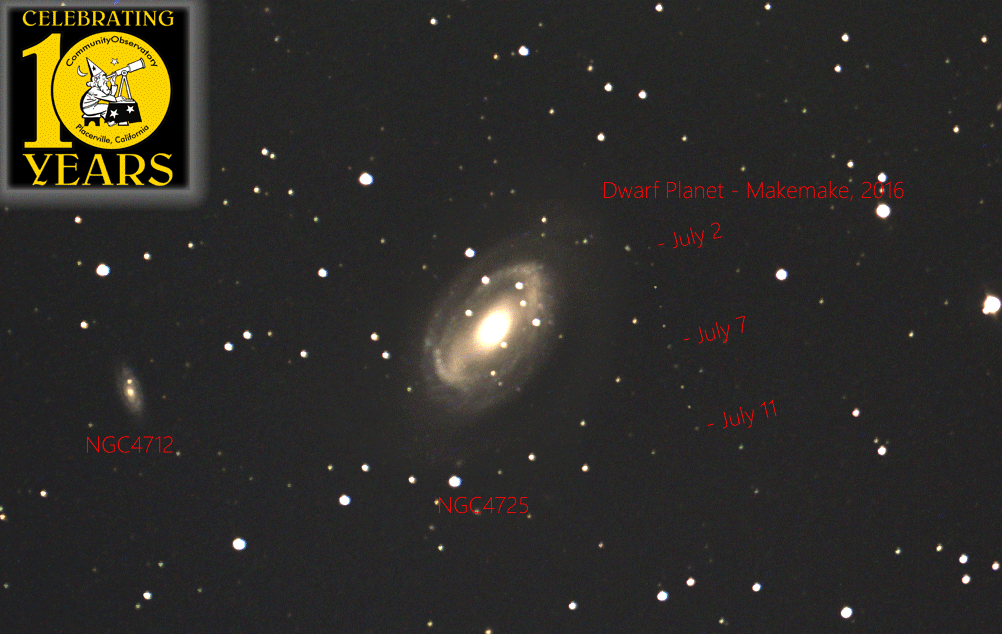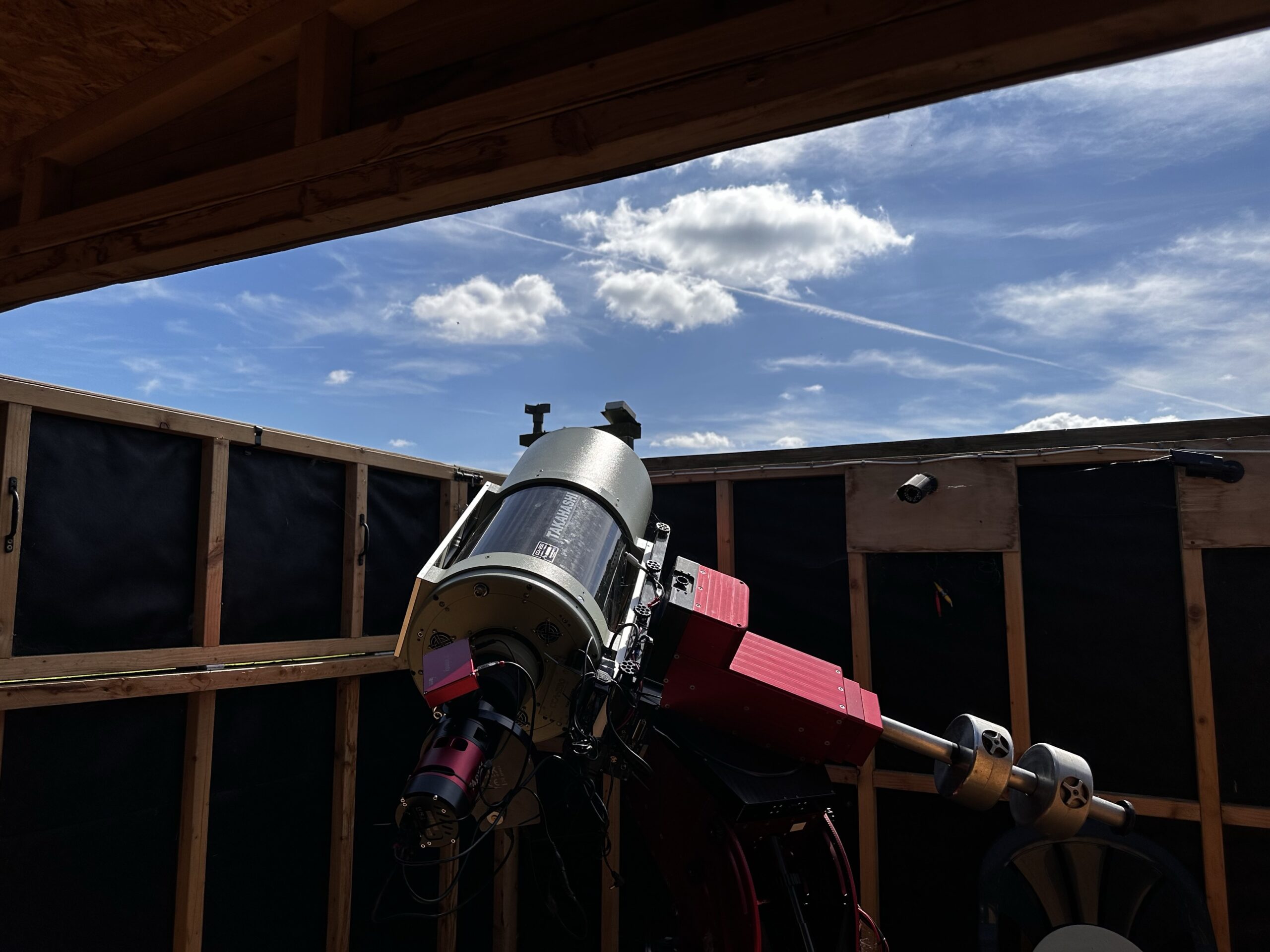As we explored in our recent post about spectroscopy using RSpec, the applications of CCD cameras extend from astrophotography to video astronomy, astrometry, photometry, spectroscopy and beyond.
One great example comes from Community Observatory in Placerville, California. In July, they used an Atik Infinity camera to capture the passing of dwarf planet Makemake near spiral galaxy NGC4725.
Inspired by a challenge from a Facebook post, they hastily decided to plot the path of the dwarf planet over the course of ten nights. Their wonderful volunteers either took data near the end of their regular public outreach events, or opened up for just a few minutes to grab a few frames.
Naturally there’s some variability in exposure settings and sky conditions, but their incredible results allow you to clearly trace the distant planet’s path as it passes by the magnificent one-armed spiral.
- Full Credit and Copyright: Community Observatory, Placerville, California
Telescope: Celestron C14 fitted with a Hyperstar, AP1200 mount
Camera: Atik Infinity OSC
Filters: None
Exposure: about 8frames stacked at 8-15 seconds each (roughly), cropped
Software: Atik Infinity
GIF processing / Titles: Photoshop CS
Community Observatory
Community Observatory is a public observatory that’s free to the public every weekend (weather permitting!). They have a great range of equipment and host a huge number of outreach events, so if you’re ever in the area, do stop by – you can even check out their weather conditions online first.
Makemake
Makemake (pronounced mah-kee-mah-kee) is a dwarf planet in the Kuiper Belt beyond the orbit of Neptune. It’s the second brightest dwarf planet after Pluto, though it may not yet be forgiven for its role in Pluto’s demotion from full planet status. Makemake takes 310 Earth years to make a single orbit around the Sun, and even has its own moon, estimated to be about 100 miles in diameter and nicknamed MK 2.




